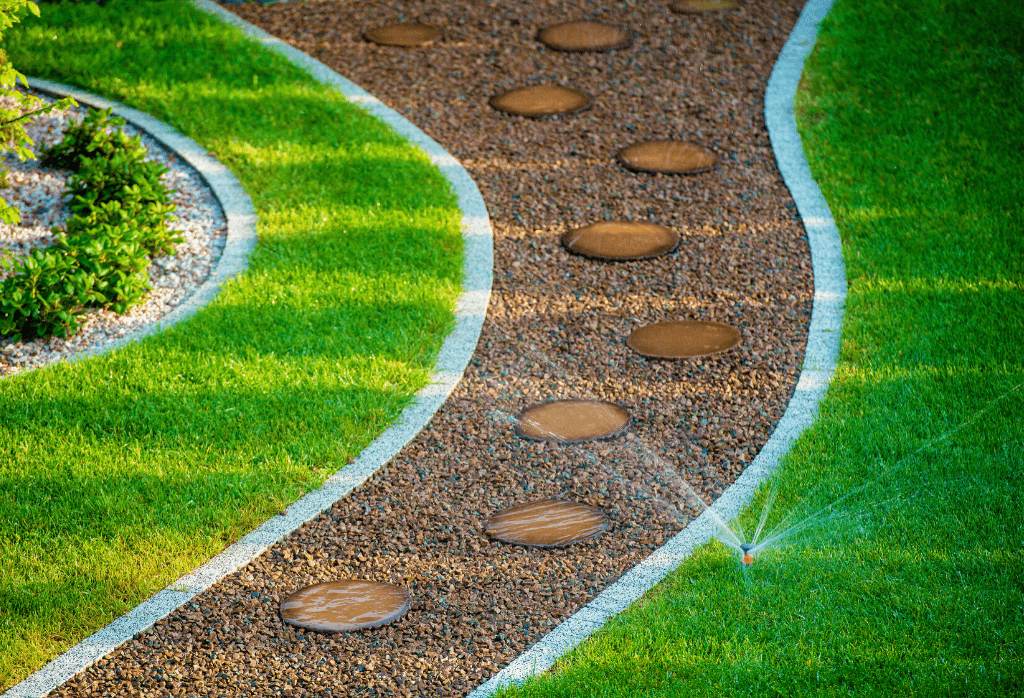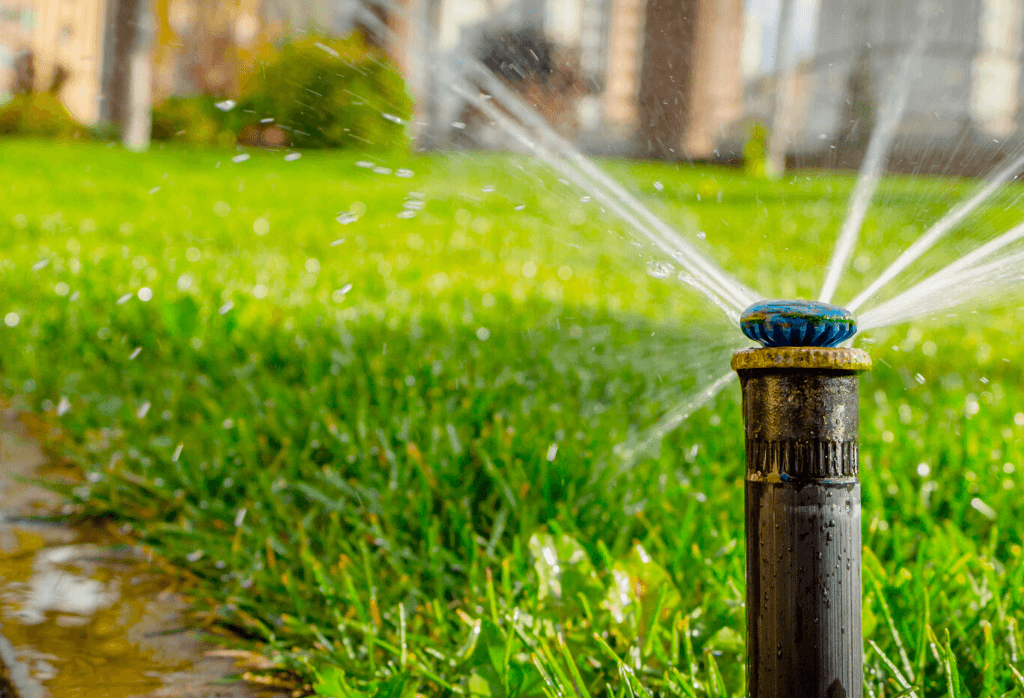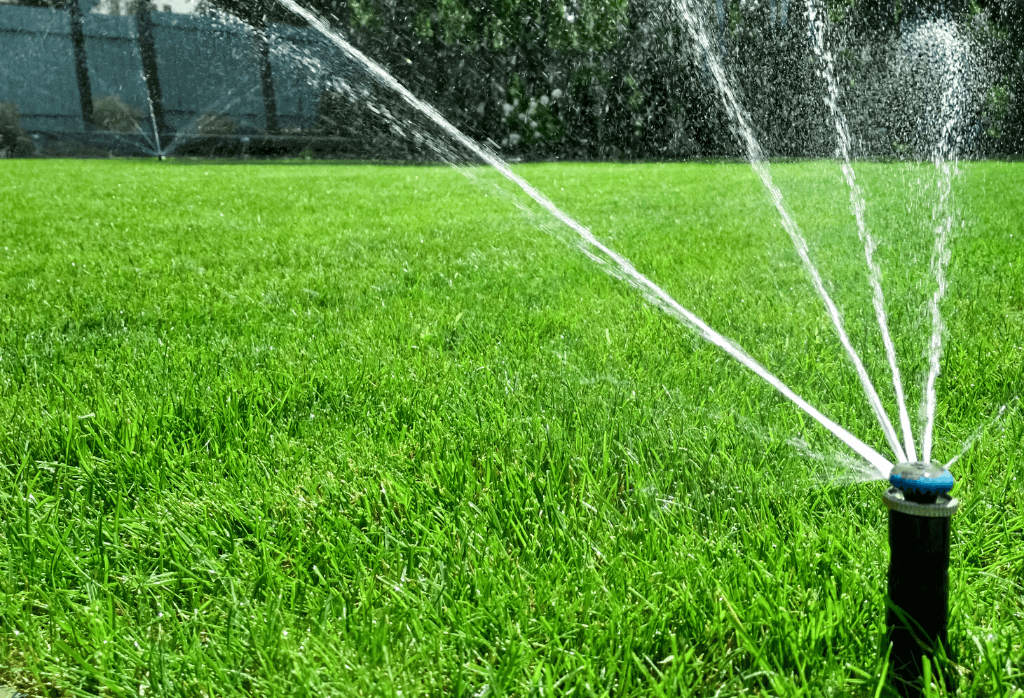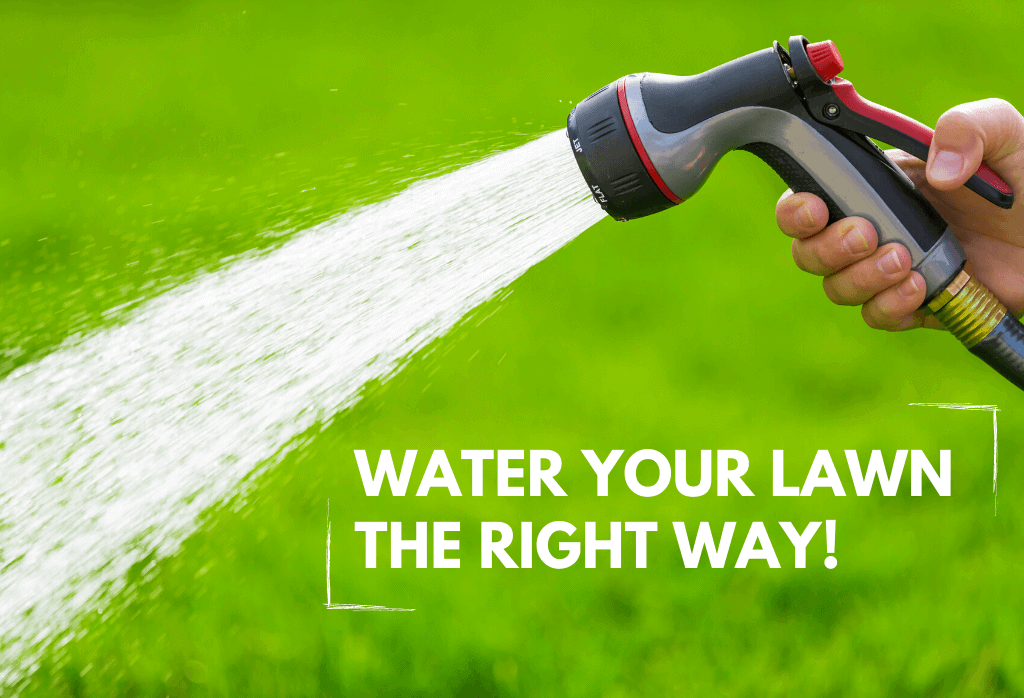What You Need To Know About Watering Your Lawn and Sprinklers
If there is one key ingredient in building a thick, healthy lawn, it is water.
No matter the grass variety in your lawn, without adequate water, the lawn won’t look it’s best. How much water is “adequate”? Experts have determined that you should apply 1.0 to 1.5 inches of water per week, in lieu of rainfall, during the growing season.
There are two key objectives when watering a lawn:
Supply an adequate amount of water to support deep rooting and maximum plant growth.
Apply the water accurately, so that the entire turf area is evenly watered, ensuring even growth and color across the lawn.



The obvious question is….how do I know when I’ve met these requirements? How long do I water and with what kind of sprinkler?
To measure the amount of water applied, the simplest process is to place a straight-sided can [coffee can, soup can, etc.] under the sprinkler pattern and water for 30 minutes. Measure the amount of water collected in the can. If your target is 1.5 inches of water per week, spread over three watering sessions, you will apply .5 inches per watering.
To determine if you have applied enough water, take a kitchen knife, and dig into the soil to determine how deep the soil is damp. Adjust watering time so that the soil is moist to a depth of at least two inches. By ensuring that water seeps into the top couple of inches of soil, you are creating the right conditions for deep root growth, important to sustain turf grass plants when under drought and other stresses.

To apply supplemental irrigation, you have a variety of options; to save time and labor, you may select an automatic irrigation system. A series of underground pipes and pop-up sprinkler heads, operated by a pre-programmed controller can be a sensible option. Yes, the initial cost is higher, but, by controlling water distribution closely, you will likely save on water use in the long run and you won’t have to remember to turn the sprinkler on and off.
Less expensive, manually operated sprinklers come in several types and models. Oscillating sprinklers send an attractive spray fan of water high into the air, creating a pleasing to watch pattern as the perforated distribution bar moves back and forth. Problem is, oscillators do not evenly distribute the water. This lack of even distribution can lead to dry and off-color areas across the lawn, allowing turf to thin out and weeds to invade.
The most accurate above ground, manual sprinkler, is the rotating, impulse sprinkler. We’ve all heard that familiar ticka, ticka, ticka, tic, tic, tic, of the impulse sprinkler as it evenly sends water across the sprinkler pattern. These easy to use impulse sprinklers can be adjusted to water large or small areas. Some models come with tripods, raising the sprinkler two or more feet off the lawn and increasing the watering pattern to several thousand square feet of area.
Drip irrigation is used to supply water slowly, from a perforated pipe or hose to a very limited area. In desert regions, where water is at a premium and evaporation is a serious issue, drip irrigation is the right choice for ornamental beds, for example. But for lawns of even a few hundred square feet, larger sprinklers are required.
The key, again, no matter which sprinkler you choose, is to set up an irrigation plan that delivers water evenly across the lawn; and deep enough to maximize deep rooting. For additional information on watering your lawn, click here.
Join Our Free Lawn Care Newsletter
Stay Up to Date With The Latest News & Updates
* We don’t share your info with anyone ever.




